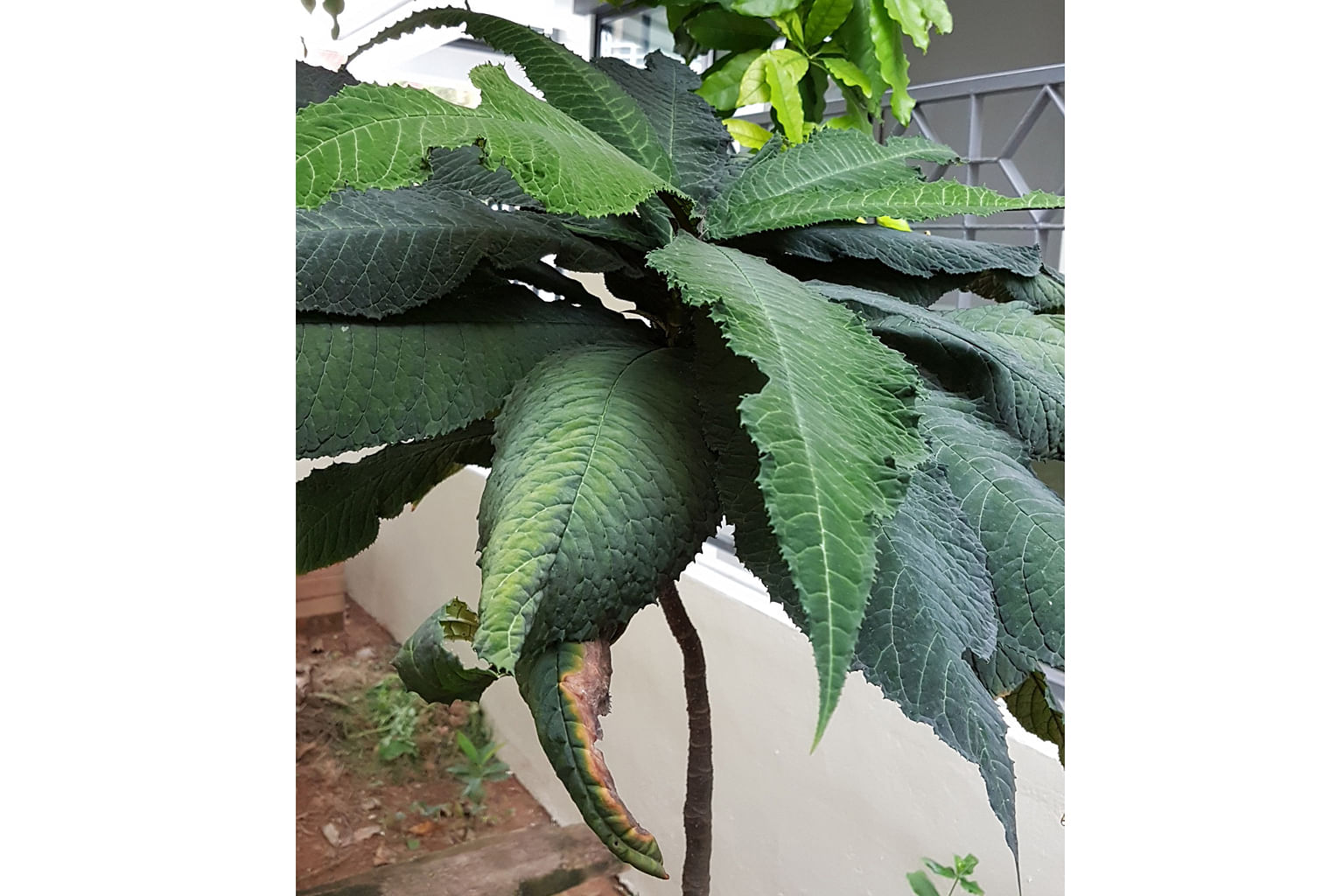Coleus is diseased
My coleus has been growing well until lately, when black spots appeared on the underside of the leaves. I propagated another pot and its leaves have the same issue and they dropped off after a while.
Is the problem due to rainwater splashing on the plant, too much water or lack of sunlight?
Tea Ann Lee
Your plant could be suffering from either a foliar fungal or bacterial disease. Coleus (Solenostemon scutellarioides) grows best under semi-shaded conditions in Singapore.
The lack of sunlight needed for growth leads to weak plants that are susceptible to diseases.
Ensure your plants are not crowded together such that they block the sunlight from reaching one another.
Also, ensure that there is sufficient air circulation between the leaves, and reduce soil splashes onto them.
You may need to protect plants from heavy rain as raindrops can damage the leaves, causing tissue to open up and making them vulnerable to invasion by pathogens.
Improve the growing conditions by following the steps above and remove and discard diseased leaves promptly to reduce the spread of the disease.
Lack of new leaves could be due to moisture stress

I have had this pot of desert rose for more than a decade. It grew very well and flowered frequently. In the past few months, however, its leaves dropped often and new leaves do not grow to full size.
I tried to vary the watering and adding of fertiliser, but nothing worked. How do I restore its health?
Ben Chen
The lack of leaves and production of very small leaves could be due to a few reasons.
First, your desert rose (Adenium obesum) may be growing in a very small pot where its roots have filled the pot or it may be a case where water is insufficient.
Plants that frequently experience moisture stress will react by producing small leaves or none at all to reduce moisture loss.
Another reason could be that the new small leaves are infested by spider mites, which is a common pest in the desert rose. They cause many small yellow spots to appear on existing leaves and severely infested leaves fall off the plant. The pests may also cause the plant to produce very small and distorted leaves.
Also, check the health of the plant's roots. An unhealthy root system brought about by soil-borne pests like root mealy bugs can reduce the vigour of the plant and soaking the root ball in chemical pesticide is often needed to treat such an issue.
Ixora needs sun to grow

I have an ixora plant outside my home. I water it almost every day and give it fertiliser twice every month. The plant also receives a maximum of two hours of sunlight on clear and sunny days.
However, its leaves are curling up and turning brown. Why is this happening and what can I do to prevent the problem from recurring?
Ahmad Musa Asy'ari Shahlan
The ixora (Ixora siamensis hybrid) needs to grow under direct sunlight for at least six hours daily.
It is commonly grown outdoors as a landscape plant under full sun exposure. From the picture and your description, the plant could be lacking sunlight.
If you are watering the plant daily and the plant is lacking sunlight, it may decline due to an overly wet root zone leading to root rot.
Plants experiencing root rot will not be able to take in water, and they will dry up over time. In this case, check the health of the roots.
If the area for plants gets only two hours of direct sunlight daily, you may have to grow shade-tolerant plants instead.
Another possibility for your plant's decline is fertiliser burn.
I suggest you use less than the dose recommended by the product label. Excessive fertiliser can also damage plant roots.
Whenever you fertilise your plants, remember to water thoroughly immediately.
Spider web-like stuff could be mealy bugs

The plants on my balcony are often infested with white spider web-like stuff. How can I treat the issue?
C.S. Ng
Your chilli plant appears to be infested with mealy bugs, a type of sucking pest. You can use a strong jet of water to wash them off. Since you are growing edible plants, you can use environment-friendly pesticides like neem oil or summer oil. Homemade castile soap solution can also be used.
When applying pesticides, ensure that you cover the plant thoroughly, including its growing tips, the undersides of leaves and the tight areas between the leaf stalk and stems.
It is necessary to repeat pesticide applications at least weekly to ensure the infestation is reduced to a manageable level.
Ensure that your plant is growing under optimal conditions where it is getting direct sunlight for at least four hours daily and not crowded with other plants.
Healthy plants will experience lower incidence of pest and disease issues.
Zou Ma Tai grows best under semi-shade

What is the name of this plant? I believe it has some medicinal value.
Vincent Chow
The plant is known botanically as Ardisia kteniophylla and its Chinese name is "Zou Ma Tai".
It is sold in nurseries and has uses in Traditional Chinese medicine
The plant grows best under semi-shade and in moist, well-drained soil.
• Answers by Dr Wilson Wong, an NParks-certified practising horticulturist and park manager. He is the founder of Green Culture Singapore and an adjunct assistant professor (Food Science & Technology) at the National University of Singapore.
• Have a gardening query? E-mail it with clear, high-resolution pictures of at least 1MB, if any, and your full name to stlife@sph.com.sg

